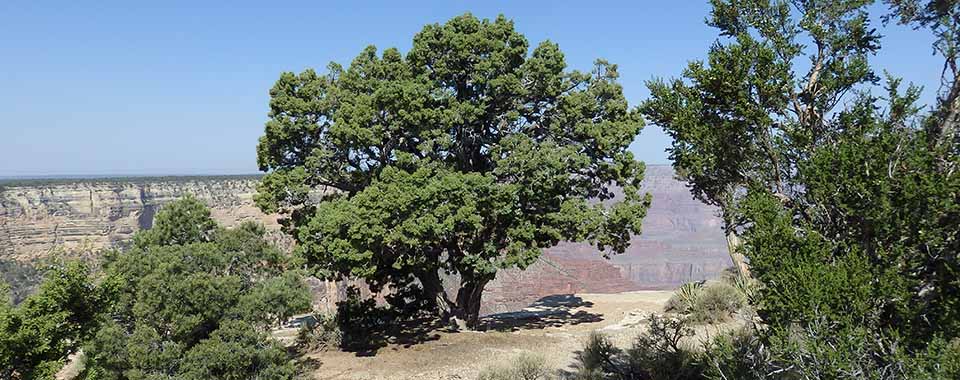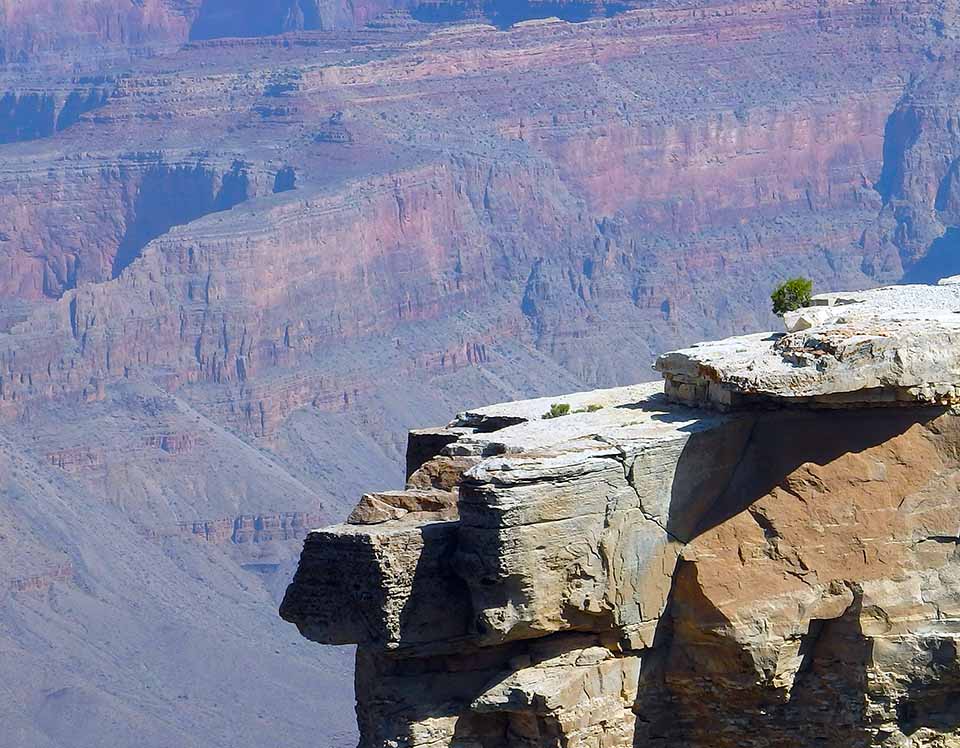
This tree will be here long after you're gone. It's a Utah Juniper, part of what is fondly called the PJ forest, and it's probably already between 700 and 1000 years old. Along with the Pinyon Pine, it's part of the Pinyon/Juniper Forest, the iconic landscape of much of the southwest. These trees only grow 30 feet tall or so, but dominate scrubby looking ridges and mesa tops between 3000 and 8000 feet of elevation. As a visitor to the South Rim of the Grand Canyon, you'll spend a lot of time in this dry and open ecosystem, as it covers much of the area of the rim trails on the edge of the Canyon.
The tree in the photograph probably sprouted in an open spot about the time the Ancestral Puebloan people were building their cliff dwellings in carefully chosen rock walls from Mesa Verde to here. A Pinyon Jay or Townsend's Solitaire would have dropped the seed on this spot. The local Paleo Indians may have used some of this tree, the berries for food and medicines and the wood for fire. If not, certainly it supported an array of wildlife with its seeds and needles, nest sites and den spots.
As it matured, a process of several hundred years, the climate grew drier and somewhere in that period, the people left, no longer able to survive here. The next few centuries brought the Little Ice Age as well as the dizzying span of human history that leads to 2016.
The Crusades devastated Europe. Leif Ericsson landed in Newfoundland. Genghis Khan invaded China, and the Magna Carta was signed. The Renaissance;DaVinci painted the Mona Lisa, Michelangelo sculpted the David. Earthquakes, floods, fires. Mt. Pinatubu blew up. Ivan the Terrible. The Scientific Revolution. Paul Revere rode to warn Adams and Hancock that the British were coming. The opening of the west followed the Civil War, and eventually Grand Canyon tourism began in the late 19th Century. That juniper survived the building of Hermit Road, and it was a near miss.
A host of pictures and words flew by during those centuries. Some of the important ones survive;millions of frivolous ones like these are gone. If this tree could talk, would it have anything to say to us?
And this brings us to the following photo. Another juniper by the Hermit Road, this one probably born after Powell's Colorado River exploration. A mere baby, less than a hundred years old, a lot of twisting and gnarling in this little trunk still to come.
What events in the history of the planet, and in human history, will this juniper see - if it survives to a ripe old age?

Return to Inspiration Point Blog Index Page
This blog is meant to encourage awareness and thoughtfulness about the Grand Canyon, one of our most precious resources. It is not merely a story of what happens or has happened here, not a cookbook for what you should make of it yourself, but more an example of the many-faceted inspiration the Canyon nurtures in an artist, perhaps in you. Indeed, inspiration may be the Canyon’s greatest resource. These words are sincere, my own take on this world, deliberately non-academic and directed toward users of social media. In no way does it represent the policies or opinions of the National Park Service, although it is done under the auspices of that entity, but is offered in gratitude, with my respect and admiration for these soldiers of conservation. George H. Jacobi 2016
